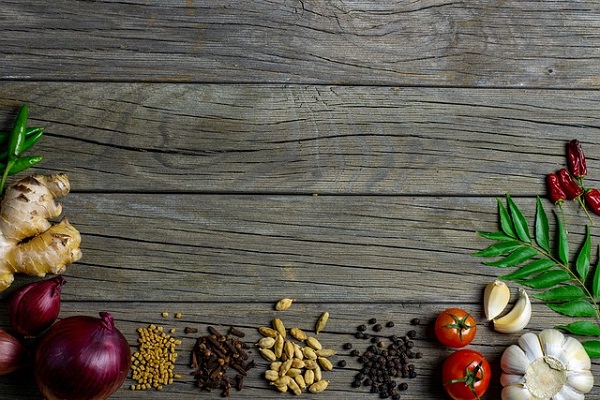Words: Dr Parag Vasudev YADAV
Ayurveda details a host of concepts related to disease pathogenesis and ama is one of them. It is described as toxin, or antigen, that may trigger disease pathogenesis. It is believed that hypo-functioning of agni leads to the production of ama — this can combine with other biological entities and induce various pathological conditions, viz., —
- Ama with vata and pitta induced condition of sama dosha
- Ama with dhatus induced condition of sama dushya
- Ama with mala induced sama mala.
The above mentioned combinations of ama with doshas, dhatus and malas result in disease — amajeerna, atisara, grahani dosha, jwara, amavata, etc.
When ama mixes with vata, it intensifies in the lower abdomen and disturbs the functioning of the colon and joints. The symptoms of vata ama are dry mouth, astringent taste, constipation, dry skin, bloating, pain and arthritis.
When ama mixes with pitta dosha, it accumulates in the middle abdomen and affects the functioning of the small intestine and liver. Pitta ama circulates with blood; it is sour and acidic in nature and it also imparts a bitter taste in mouth. The condition causes heartburn, diarrhoea, nausea and acid indigestion.
When kapha mixes with ama, it accumulates in the stomach and chest, as kapha ama. It causes foul smelling, salty taste in the mouth; it also suppresses appetite and triggers sinus congestion and tenderness.
Disturbed dietary habits, improper sleeping patterns, unethical conduct, excessive sexual indulgence, day-time sleepiness and lack of disciplined living regimen, etc., are some factors that can lead to agnimandya, followed by the production of ama. Ama generally affects the tridoshas, dhatus and balas, while combining with them and causing disease.
The various pathological factors [samprapti-ghatak] associated with ama are as follows:
- Hetu: Agnidusti, agnimandhkarak
- Adisthan: Mahasrotas, vseshta grahani
- Dosa: Tridosha
- Srotas: Annavah, purisvah
- Dusya: Anna, ras.
The ama produced by low levels of jatharagni and bhutaagni possess heavy and sticky nature; they, therefore, block channels of body. The ama, when combined with doshas, termed as amavisha, can cause chronic illness.
The pathological events associated with ama are as follows:
- Blocks minute channels and affects the circulatory process
- Ama aggravates tridosha
- Disturbs nutritional supply to the tissue
- Diminishes the potency of dhatus.
Ama: A Modern Perspective
Autoimmune diseases occur due to the harmful response of our [self-]immune system; this leads to the ‘attack’ on body tissue as anticipated response against antigen/toxin, or ama. The inflammatory response in autoimmune disorders is triggered by ama, or antigen, at the cellular level.
- Vitiates agni and imparts a feeling of uneasiness
- Causes lethargy, mental sickness and lack of enthusiasm
- Gas, diarrhoea, bloating, bad odour in mouth [halitosis] and loss of appetite.
Characteristics Of Ama
- Unpleasant odour
- Deprived nutritional component of ahara
- Tendency of accumulation
- Heavy and sticky.
Ama obstructs srotas of the body; it can combine with doshas to produce various diseases. Antigen vitiated doshas and altered immune response further damage the tissues. Antigen/ama modulate signalling at cellular levels, leading to incompatible autoimmune response. This can damage tissues. Ankylosing spondylitis, Crohn’s disease, psoriasis, rheumatoid arthritis, ulcerative colitis and lupus, etc., may be considered as autoimmune diseases arising in response against ama, or antigen.
Ayurveda Management Of Ama Doshas
Nidan parivarjanan means avoidance of causative factors; this helps to prevent harmful effects of ama. Overeating should be avoided and food cooked properly need to be consumed. Hot, sour, heavy and oily food stuffs are not recommended. Psychological stress can suppress agni — so, one should keep away from stress, anxiety, anger and grief. Ama pachan substances are recommended depending upon the prakriti of the individual. Agni dipana herbs, shodhan and swedana therapy, snehana and yoga help to eliminate ama and vitiated doshas.
Herbs which digest vata are trikatu, ginger, black pepper, cinnamon, hing, ajwan, fennel, etc. They help to soften the accumulation of ama and eliminate aggravated vata dosha.
Similarly, Pitta ama can be pacified by using bitter herbs, spices, coriander, cinnamon and lime. The detoxification measures also help to remove pitta ama.
Kapha ama can be corrected using expectorants and emetics. Pungent and bitter herbs help to pacify kapha ama. Trikatu, ginger, pippali, chitrak, garlic, vidanga and tulsi, etc., help to correct kapha ama.
Pathya
- Sour fruits and vegetables
- Whole grains and mung beans
- Spices, ginger, cinnamon and fennel
- Pumpkin seeds, mustard and flaxseed oil.
Apathya
- Sweet, sour and salty food
- Mushrooms, nuts and dairy products
- Processed and starchy grains
- Red meat and shellfish.
Conclusion
Ama, formed at the levels of jatharagni and dhatvagni, initiate many pathological events inside the body. Ama further deteriorates digestive and metabolic activities, blocks strotas, vitiated dhatus and rakta and cause various diseases, including autoimmune disorders. Avoidance of virrudha aahara, and fear, anxiety, restoring disciplinary daily regimen, using Ayurveda drugs, detoxification measures, yoga and pathya and apathya, help to avoid prevalence of diseases associated with the excessive production of ama.
Dr PARAG VASUDEV YADAV, BAMS, MD [Rognidan Avam Vikriti Vidnyan] Assistant Professor, MES Ayurveda Mahavidyala, Ghanekhunt-Lote, Taluka: Khed, District: Ratnagiri, Maharashtra, India. This article [Medical Perspective on Ama as per Ayurveda and Modern Consideration: A Review], was first published in Journal of Drug Delivery and Therapeutics. 2020; 10[1-s]:205-207, under a Creative Commons Attribution-Non-Commercial 4.0 International License.

